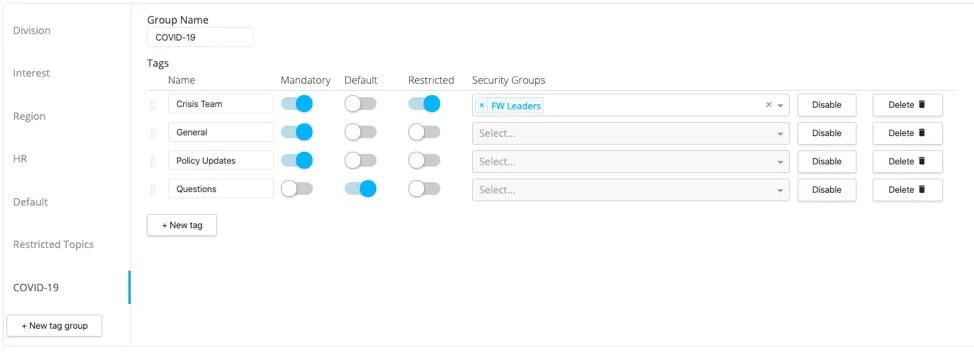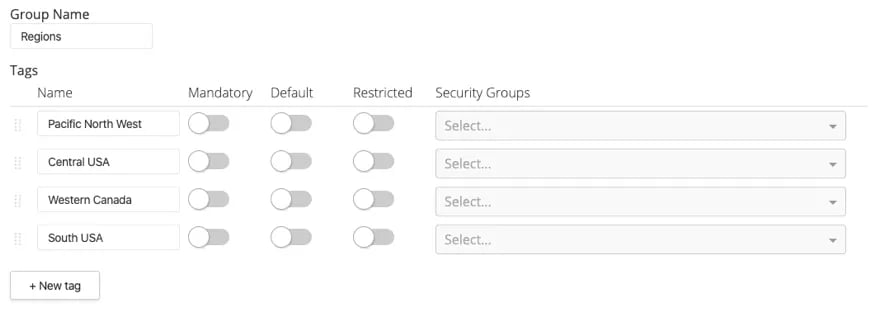Sparrow is a powerful communications platform with many features that can make a significant difference during these times. We’ve started a new series entitled, Prescriptive Guidance, where we will highlight a key feature and demonstrate how you can use it right now to help connect and inform your people. Each post in this series will highlight a key feature and how you can use it right now to help connect and inform your people.
Prescriptive Guidance for Channels
Channels (formerly topics and tags) are at the heart of Sparrow. Employees subscribe to channels to personalize their news feeds. This means that each post that is assigned to a subscribed channel will show up in employee’s feed.
There are three types of channels in Sparrow:
- Mandatory channels. Employees are automatically subscribed to mandatory channels and cannot unsubscribe.
- Default channels. Employees are opted in to these channels default but can unsubscribe at any time.
- Restricted channels. These channels are locked to a particular set of Active Directory groups. Post published through a restricted channel are accessible only to only users in that group.
How to set up your channels for a COVID-19 response
Here are some suggestions on how you can configure Sparrow channels to optimize your crisis response. In this example, we have defined several channel groups such as Division, Interest, Region, etc. They are all visible in the left panel of the screen. Each of the groups contains a set of channels. This is what a COVID-19 channel can look like:

- Crisis Team: This is a secure channel for a specific AD group (or groups). All members of the AD group are automatically subscribed and will receive restricted information. In this example, our restricted group is limited to FW Leaders.
- General: This channel is used to communicate general information regarding the pandemic. It is set as mandatory so that everyone in your organization is automatically subscribed to this channel and cannot unsubscribe. Every post tagged with this channel will reach your entire workforce.
- Policy Updates: This mandatory channel is meant to communicate policy changes. Most posts in that channel would use the compliance post feature, which requires employees to explicitly acknowledge policy changes. As an administrator, you can easily access the report in your Sparrow Admin Portal and identify who has and who hasn’t complied to date.
- Questions: This is an optional communications channel that users are subscribed to by default but can opt-out of easily. Authors can use this channel to post on a variety of topics and employees can submit their specific questions through comments.
For larger organizations, having a general channel may not be enough. Typically, we recommend that larger companies create channels for each division and region. For example:

In addition, regions can be broken out:

Each of these channels can be made mandatory, default, or restricted. You can use the same approach to streamline your audience targeting during COVID-19. For example, if you had a division that was temporarily shut down, you may want to create a channel within the COVID-19 Group that talks specifically to those affected.
Finally, during a crisis, internal communications is what drives morale. That’s why, if your comms team has the bandwidth, we also suggest adding two more channels for a bit more upbeat content:


At Sparrow, we believe that focused corporate communications can be transformative. Instead of a collection of broken tools that do not work together, corporate communications should have the same power that your marketing team does. Corporate Communications should be able to reach the right employees, with the right message, on whatever platform they are using, and be able to measure every interaction. We believe that it is time to change the world of corporate communications with a true corporate communications platform that understands what it means to be a communicator.
Book a conversation with us today. “[Sparrow] has proven invaluable…” – Corporate Communications, Hamilton Health Sciences










